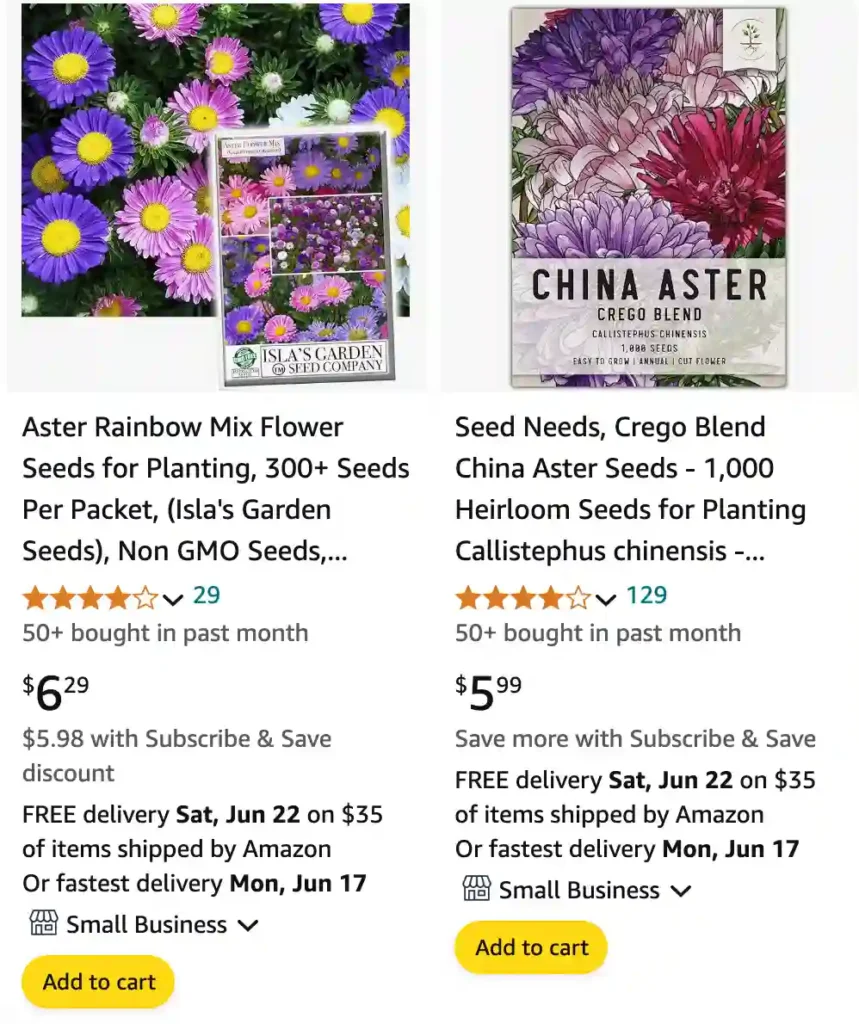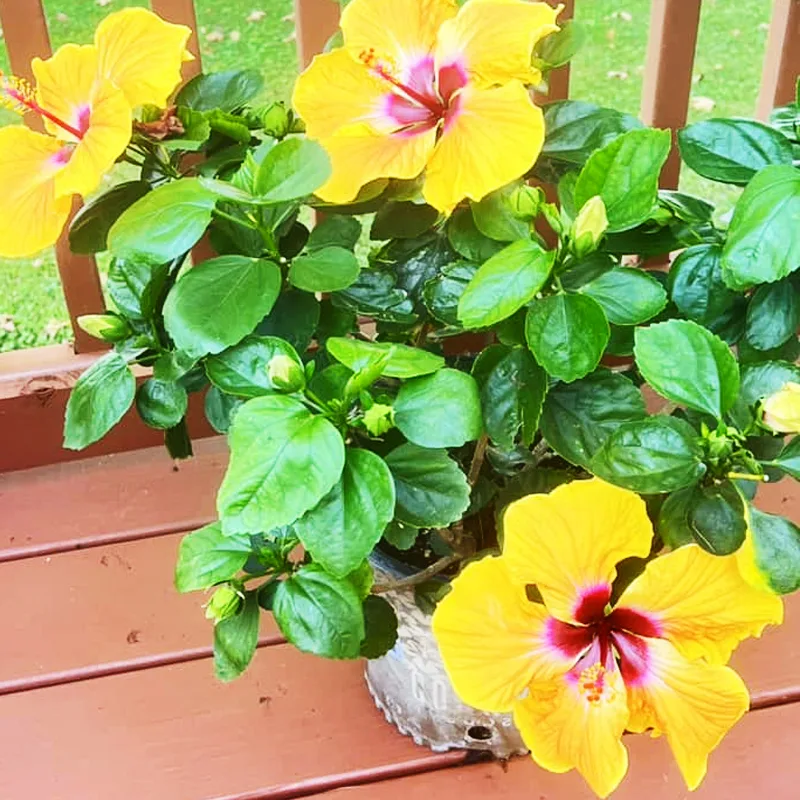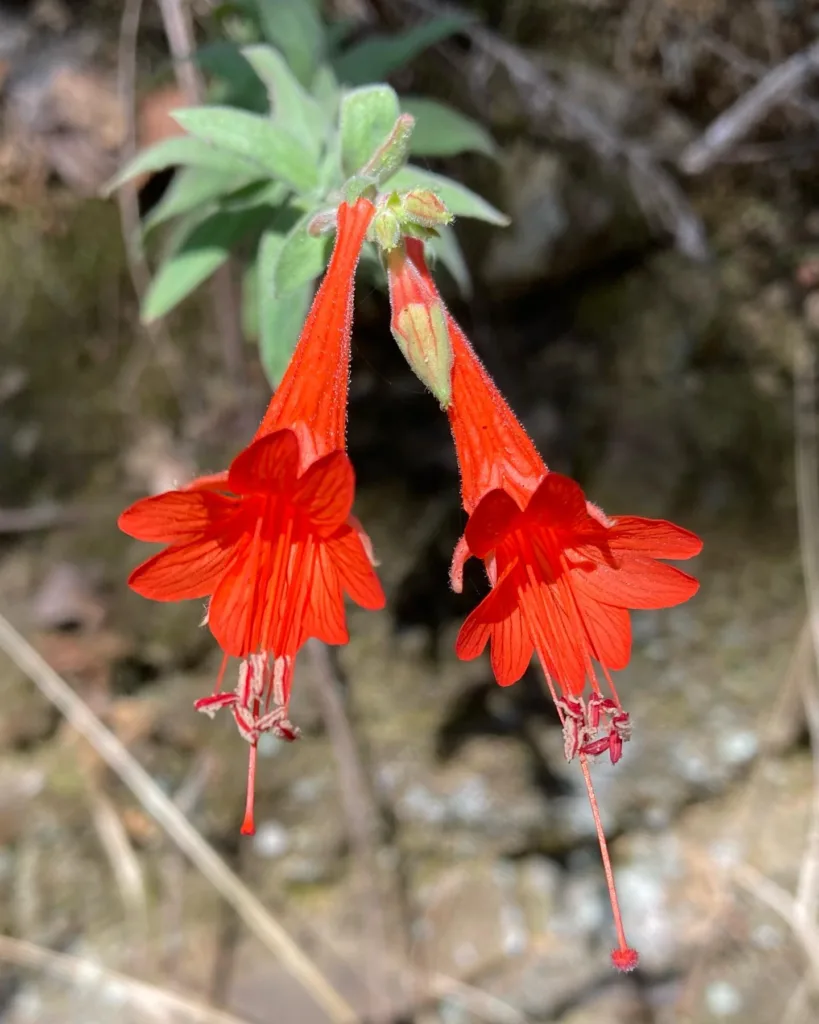
August 25 – Aster
"Aster, the starflower, defines August 25."
Aster symbolizes love and wisdom. You are a source of hope and enlightenment, spreading positivity wherever you go. Like its star-like blooms, you shine brightly.
All About Asters: A Gardener’s Guide by Ferb Vu
Asters are a personal favorite. These late-blooming beauties bring vibrant colors to the garden when many other flowers are fading. They’re easy to grow, come in a vast array of varieties, and attract beneficial pollinators – what’s not to love?
What are Asters?
Asters are a genus of flowering plants in the Asteraceae family, which also includes daisies, sunflowers, and chrysanthemums. Native to Eurasia and North America, there are over 100 known Aster species, offering a dazzling range of colors, sizes, and bloom times.
Aster Species
- Aster ageratoides Turcz.
- Aster aitchisonii Boiss.
- Aster alatipes Hemsl.
- Aster albescens (DC.) Wall. ex Hand.-Mazz.
- Aster alpinus L. Plant FAQs: Aster Alpinus – Alpine Aster
- Aster altaicus Willd.
- Aster amellus L. Plant FAQs: Aster Amellus
- Aster arenarius (Kitam.) Nemoto
- Aster argyropholis Hand.-Mazz.
- Aster asagrayi Makino
- Aster asteroides (DC.) Kuntze
- Aster atropurpurea W.P.Li & G.X.Chen
- Aster auriculatus Franch.
- Aster baccharoides Steetz
- Aster barbellatus Grierson
- Aster batangensis Bureau & Franch.
- Aster bellidiastrum (L.) Scop.
- Aster biennis Ledeb.
- Aster bietii Franch.
- Aster bipinnatisectus Ludlow ex Grierson
- Aster boweri Hemsl.
- Aster brachytrichus Franch.
- Aster brevicaulis W.P.Li
- Aster brevis Hand.-Mazz.
- Aster bulleyanus Jeffrey
- Aster chekiangensis (C.Ling ex Y.Ling) Y.F.Lu & X.F.Jin
- Aster chingshuiensis Y.C.Liu & C.H.Ou
- Aster chuanshanensis W.P.Li
- Aster crenatifolius Hand.-Mazz.
- Aster danyangensis Jae Y.Kim & G.Y.Chung
- Aster dianchuanensis J.W.Xiao & W.P.Li
- Aster dimorphophyllus Franch. & Sav.
- Aster diplostephioides (DC.) Benth. ex C.B.Clarke
- Aster dolichophyllus Y.Ling
- Aster dolichopodus Y.Ling
- Aster eligulatus (Y.Ling ex Y.L.Chen, S.Yun Liang & K.Y.Pan) Brouillet, Semple & Y.L.Chen
- Aster eremophilus Bunge
- Aster falconeri (C.B.Clarke) Hutch.
- Aster fanjingshanicus Y.L.Chen & D.J.Liu
- Aster farreri W.W.Sm. & Jeffrey
- Aster filipes J.Q.Fu
- Aster flaccidus Bunge
- Aster formosanus Hayata
- Aster fulgidulus Grierson
- Aster fuscescens Bureau & Franch.
- Aster giraldii Diels
- Aster glehnii F.Schmidt
- Aster gouldii C.E.C.Fisch.
- Aster gracilicaulis Y.Ling ex J.Q.Fu
- Aster guanwuensis S.S.Ying
- Aster handelii Onno
- Aster hayatae H.Lév. & Vaniot
- Aster helenae Merr.
- Aster heliopsis Grierson
- Aster hersileoides C.K.Schneid.
- Aster heterolepis Hand.-Mazz.
- Aster himalaicus C.B.Clarke
- Aster hispidus Thunb.
- Aster holohermaphroditus (Grierson) R.Abid & Qaiser
- Aster hololachnus Y.Ling ex Y.L.Chen, S.Yun Liang & K.Y.Pan
- Aster homochlamydeus Hand.-Mazz.
- Aster huangpingensis W.P.Li & Zhi Li
- Aster hunanensis Hand.-Mazz.
- Aster hypoleucus Hand.-Mazz.
- Aster iinumae Kitam.
- Aster ilanmontanus S.S.Ying
- Aster incisus Fisch.
- Aster indamellus Grierson
- Aster indicus L.
- Aster ionoglossus Y.Ling ex Y.L.Chen, S.Yun Liang & K.Y.Pan
- Aster itsunboshi Kitam.
- Aster jeffreyanus Diels
- Aster jiangkouensis X.L.Yu & Xiong Li
- Aster jiulongshanensis Z.H.Chen, X.Y.Ye & C.C.Pan
- Aster kanoi S.W.Chung, W.J.Huang & T.C.Hsu
- Aster kantoensis Kitam.
- Aster komonoensis Makino
- Aster koraiensis Nakai
- Aster labrangensis Hand.-Mazz.
- Aster langaoensis J.Q.Fu
- Aster latibracteatus Franch.
- Aster lautureanus (Debeaux) Franch.
- Aster lavandulifolius Hand.-Mazz.
- Aster likiangensis Franch.
- Aster limosus Hemsl.
- Aster lingii G.J.Zhang & T.G.Gao
- Aster lingulatus Franch.
- Aster lipskii Kom.
- Aster lixianensis (J.Q.Fu) Brouillet, Semple & Y.L.Chen
- Aster lushiensis (J.Q.Fu) Brouillet, Semple & Y.L.Chen
- Aster maackii Regel
- Aster mangshanensis Y.Ling
- Aster marchandii H.Lév.
- Aster medius (Krylov) Serg.
- Aster megalanthus Y.Ling
- Aster menelii H.Lév.
- Aster meyendorffii (Regel & Maack) Voss
- Aster microcephalus (Miq.) Franch. & Sav.
- Aster miquelianus H.Hara
- Aster miyagii Koidz.
- Aster molliusculus (Lindl. ex DC.) C.B.Clarke
- Aster mongolicus Franch.
- Aster morrisonensis Hayata
- Aster motuoensis Y.L.Chen
- Aster moupinensis (Franch.) Hand.-Mazz.
- Aster nakaoi Kitam.
- Aster neoelegans Grierson
- Aster nigromontanus Dunn
- Aster nitidus C.C.Chang
- Aster oldhamii Hemsl.
- Aster oliganthus W.P.Li & Zhi Li
- Aster oreophilus Franch.
- Aster ovalifolius Kitam.
- Aster panduratus Nees ex Walp.
- Aster pekinensis (Hance) F.H.Chen
- Aster philippinensis S.Moore
- Aster piccolii Hook.f.
- Aster poliothamnus Diels
- Aster polius C.K.Schneid.
- Aster popovii Botsch.
- Aster prainii (J.R.Drumm.) Y.L.Chen
- Aster procerus Hemsl.
- Aster pseudosimplex Brouillet, Semple & Y.L.Chen
- Aster pujosii Quézel
- Aster pycnophyllus Franch. ex W.W.Sm.
- Aster pyrenaeus Desf. ex DC.
- Aster quanzhouensis M.Tang, G.J.Yan & W.P.Li
- Aster retusus Ludlow
- Aster rockianus Hand.-Mazz.
- Aster rugulosus Maxim.
- Aster salwinensis Onno
- Aster sampsonii Hemsl.
- Aster sanczirii Kamelin & Gubanov
- Aster sanqingshanicus J.W.Xiao & W.P.Li
- Aster satsumensis Soejima
- Aster savatieri Makino
- Aster saxicola W.P.Li & Z.Li
- Aster scaber Thunb.
- Aster × sekimotoi Makino
- Aster semiamplexicaulis (Makino) Makino ex Koidz.
- Aster semiprostratus (Grierson) H.Ikeda
- Aster senecioides Franch.
- Aster setchuenensis Franch.
- Aster shimadae (Kitam.) Nemoto
- Aster sikkimensis Hook.f. & Thomson
- Aster sikuensis W.W.Sm. & Farrer
- Aster sinianus Hand.-Mazz.
- Aster sinoangustifolius Brouillet, Semple & Y.L.Chen
- Aster siyuanensis S.S.Ying
- Aster smithianus Hand.-Mazz.
- Aster sohayakiensis Koidz.
- Aster souliei Franch.
- Aster spathulifolius Maxim.
- Aster sphaerotus Y.Ling
- Aster stracheyi Hook.f.
- Aster sugimotoi Kitam.
- Aster taiwanensis Kitam.
- Aster takasago-montanus Sasaki
- Aster taliangshanensis Y.Ling
- Aster taoshanensis S.S.Ying
- Aster taoyuenensis S.S.Ying
- Aster tataricus L.f. Plant FAQs: Aster Tataricus
- Aster techinensis Y.Ling
- Aster tenuipes Makino
- Aster tianmenshanensis G.J.Zhang & T.G.Gao
- Aster tientschwanensis Hand.-Mazz.
- Aster tonglingensis G.J.Zhang & T.G.Gao
- Aster tongolensis Franch.
- Aster tricephalus C.B.Clarke
- Aster trichoneurus Y.Ling
- Aster trinervius Roxb. ex D.Don
- Aster turbinatus S.Moore
- Aster velutinosus Y.Ling
- Aster verticillatus (Reinw.) Brouillet, Semple & Y.L.Chen
- Aster vestitus Franch.
- Aster viscidulus (Makino) Makino
- Aster vvedenskyi Bondarenko
- Aster wattii C.B.Clarke
- Aster willkommii Sch.Bip.
- Aster woroschilovii Zdor. & I.I.Shapoval
- Aster xianjuensis Y.F.Lu, W.Y.Xie & X.F.Jin
- Aster yakushimensis (Kitam.) Soejima & Yahara
- Aster yamazutae Matsuda
- Aster yomena (Kitam.) Honda
- Aster yoshinaganus (Kitam.) Mot.Ito & Soejima
- Aster yuanqunensis (J.Q.Fu) Brouillet, Semple & Y.L.Chen
- Aster yunnanensis Franch.
Aster vs Daisy
Asters and daisies are often confused, and it’s understandable. Both have cheerful, daisy-like flowers with central discs and radiating petals. However, there are subtle distinctions:
- Petals: Aster petals tend to be slender and more numerous than daisy petals.
- Centers: Aster centers are typically yellow or orange, while daisy centers can vary in color.
- Bloom Time: Asters generally bloom in late summer and fall, whereas daisies flower throughout the growing season.
Aster vs Mum
Asters and mums (chrysanthemums) are close relatives and share similar growing requirements. They can be beautiful companions in the fall garden. However, note that some Aster varieties may bloom earlier than mums. Planting varieties with staggered bloom times ensures a continuous display of color.
Aster vs Chamomile
Chamomile‘s delicate flowers and soothing scent made it a charming addition next to Aster, creating a calming atmosphere.
Aster vs Morning Glory
Morning Glory‘s rapid growth and colorful blooms overshadowed Aster, adding a splash of vibrancy to my outdoor space.
How to care for Asters?
Asters are generally low-maintenance plants. Here’s what you need to know:
- Light: Most Asters prefer full sun, but some tolerate partial shade.
- Soil: Well-drained, fertile soil is ideal. Amending clay soil with compost can improve drainage.
- Watering: Water regularly, especially during dry spells. Avoid soggy conditions.
- Fertilizing: A light application of balanced fertilizer in spring is beneficial.
- Deadheading: Regularly removing spent flowers encourages continued blooming.
Pests and Diseases
Asters are relatively pest- and disease-resistant. However, they can be susceptible to powdery mildew in humid conditions. Ensuring good air circulation and avoiding overhead watering can help prevent this.
Using Asters in Your Garden
Asters are incredibly versatile. Here are some ideas:
- Borders: Plant taller varieties at the back of borders for a stunning late-season display.
- Cutting Garden: Asters make excellent cut flowers, lasting up to two weeks in a vase.
- Pollinator Magnets: Asters attract butterflies, bees, and other beneficial insects.
- Containers: Dwarf varieties are perfect for adding bursts of color to patios and balconies.
Aster Propagation:
- Division: Asters can be easily propagated by dividing established clumps in spring or fall. Simply dig up the plant, carefully separate the root sections, and replant each division.
- Seed Starting: While possible, starting Asters from seed can be trickier and takes longer to see blooms. For best results, sow seeds indoors 6-8 weeks before the last frost and transplant seedlings outdoors once the danger of frost has passed.
Overwintering Asters:
- Most Aster varieties are hardy in zones 3-8. If you live in a colder climate, you can protect your Asters by mulching around the base of the plant in late fall after the first frost.
Specific Aster Care Needs:
- Pinching: For bushier plants with more flowers, pinch back the growing tips of young Aster plants to encourage branching.
- Staking: Taller varieties may benefit from staking to prevent them from flopping over, especially during heavy rains.
Aster Companion Plants:
- Coneflowers (Echinacea): These purple beauties bloom alongside Asters in late summer and fall, creating a stunning color combination.
- Goldenrod (Solidago): The golden plumes of goldenrod provide a warm contrast to Aster flowers and attract similar pollinators.
- Grasses (Ornamental Grasses): Ornamental grasses add textural interest and movement to the garden, complementing the form of Asters.
Conclusion: A Gardener’s Delight
Asters are a rewarding addition to any garden. With their diverse forms and vibrant blooms, they provide a welcome splash of color when other flowers are fading. Whether you’re a seasoned gardener or just starting out, Asters are sure to become a favorite. So, get planting and enjoy these late-blooming beauties!
If i die, water my plants!



